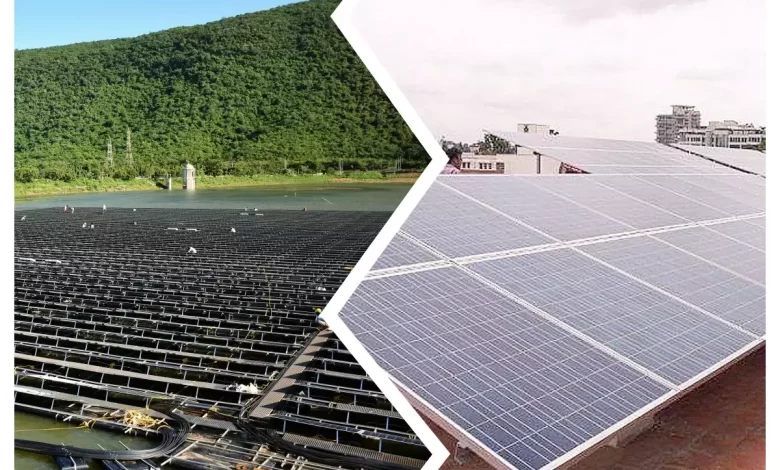How Off-Grid Solar Systems Are Transforming Rural Electrification

Rural electrification has long been a challenge in many parts of the world, particularly in developing countries. Traditional grid extension is often prohibitively expensive and logistically difficult in remote and underserved areas. Off-grid solar systems are emerging as a viable solution to this problem, providing reliable, affordable, and sustainable electricity to rural communities. This article explores how off-grid solar systems are transforming rural electrification, highlighting the benefits, key technologies, case studies, and future prospects.
The Need for Rural Electrification
Access to electricity is crucial for improving quality of life and economic development. However, according to the International Energy Agency (IEA), approximately 770 million people globally still lack access to electricity, with the majority living in rural areas. The absence of electricity limits opportunities for education, healthcare, economic activities, and overall well-being. Off-grid solar systems offer a practical and scalable solution to address this gap.
Benefits of Off-Grid Solar Systems for Rural Electrification1. Accessibility and Affordability
Off-grid solar systems are modular and scalable, making them accessible and affordable for rural households and communities. These systems can be tailored to meet the specific energy needs of users, from basic lighting and phone charging to powering small appliances and agricultural equipment.
2. Sustainability and Environmental Impact
Solar energy is a clean and renewable resource that reduces reliance on fossil fuels. Off-grid solar systems help lower greenhouse gas emissions and mitigate the environmental impact of energy generation, contributing to global sustainability goals.
3. Economic Development
Access to electricity enables economic activities, such as small-scale businesses, farming, and cottage industries. It also supports education by providing lighting for studying and powering educational devices, and improves healthcare by powering medical equipment and refrigeration for vaccines.
4. Reliability and Resilience
Off-grid solar systems offer a reliable source of power, independent of the grid. This is particularly important in rural areas where grid infrastructure is weak or nonexistent. These systems also enhance resilience to natural disasters by providing a decentralized and robust energy solution.
Table 1: Benefits of Off-Grid Solar Systems for Rural ElectrificationBenefitDescriptionImpactAccessibility and AffordabilityModular and scalable systemsCustomizable energy solutions, Cost-effectiveSustainability and Environmental ImpactClean and renewable energy sourceReduced greenhouse gas emissions, Environmental sustainabilityEconomic DevelopmentSupports economic activities and educationEnhanced livelihoods, Improved healthcareReliability and ResilienceIndependent of grid infrastructureConsistent power supply, Disaster resilienceKey Technologies in Off-Grid Solar Systems1. Solar Panels
Solar panels are the cornerstone of off-grid systems, converting sunlight into electricity. Modern advancements in photovoltaic (PV) technology have improved the efficiency and affordability of solar panels, making them more accessible for rural electrification.
2. Battery Storage
Battery storage systems store the electricity generated by solar panels for use during non-sunny periods. Advances in battery technology, such as lithium-ion batteries, have increased storage capacity, lifespan, and efficiency, making off-grid systems more reliable.
3. Charge Controllers
Charge controllers regulate the flow of electricity from the solar panels to the batteries, preventing overcharging and ensuring the longevity of the battery storage system. MPPT (Maximum Power Point Tracking) charge controllers are particularly effective in optimizing energy capture and storage.
4. Inverters
Inverters convert the direct current (DC) produced by solar panels and stored in batteries into alternating current (AC), which is used by most household appliances. Inverters are essential for making solar energy usable in rural homes and businesses.
5. Microgrids
Microgrids are localized energy grids that can operate independently of the main grid. They integrate multiple energy sources, including solar, wind, and diesel generators, with battery storage to provide a stable and reliable power supply to rural communities.
Table 2: Key Technologies in Off-Grid Solar SystemsTechnologyDescriptionImpactSolar PanelsConvert sunlight into electricityHigh efficiency, Affordable energy sourceBattery StorageStore electricity for later useIncreased reliability, Longer lifespanCharge ControllersRegulate electricity flow to batteriesPrevent overcharging, Optimize energy captureInvertersConvert DC to AC electricityUsable energy for household appliancesMicrogridsLocalized energy grids with multiple sourcesStable and reliable power supplyCase Studies of Successful Rural Electrification Projects1. Bangladesh Solar Home Systems (SHS) Program
Bangladesh has implemented one of the world’s largest off-grid solar home system programs, providing electricity to millions of rural households. The program has installed over 5 million solar home systems, significantly improving living standards and economic opportunities in rural areas.
2. India’s Rural Electrification Initiative
India has made significant strides in rural electrification through off-grid solar projects. The government’s Deen Dayal Upadhyaya Gram Jyoti Yojana (DDUGJY) and various state-led initiatives have successfully electrified remote villages using solar power, impacting millions of lives.
3. Kenya’s Solar Lantern and Home Systems
In Kenya, several organizations have distributed solar lanterns and home systems to rural households, providing a clean and reliable alternative to kerosene lamps. These projects have improved lighting, reduced indoor air pollution, and enhanced educational opportunities for children.
Table 3: Case Studies of Successful Rural Electrification ProjectsCase StudyDescriptionKey AchievementsBangladesh SHS ProgramLarge-scale solar home system installationsElectrified millions of rural householdsIndia’s Rural ElectrificationGovernment and state-led solar initiativesImproved living standards, Economic opportunitiesKenya’s Solar Lantern and Home SystemsDistribution of solar lanterns and home systemsReduced indoor air pollution, Enhanced educationChallenges and Solutions in Off-Grid Solar Electrification1. High Initial Costs
The initial investment in off-grid solar systems can be high, posing a barrier for widespread adoption in rural areas.
Solution: Financial incentives, subsidies, microfinancing, and pay-as-you-go models can help make solar systems more affordable for rural households.
2. Maintenance and Technical Support
Ensuring the proper maintenance and operation of off-grid solar systems can be challenging in remote areas with limited technical expertise.
Solution: Training local technicians, establishing service centers, and using remote monitoring technology can address maintenance issues and provide timely support.
3. Awareness and Education
Lack of awareness and understanding of solar technology can hinder adoption in rural communities.
Solution: Awareness campaigns, educational programs, and community engagement initiatives can increase understanding and acceptance of off-grid solar systems.
4. Policy and Regulatory Barriers
Inconsistent policies and regulatory frameworks can impede the deployment of off-grid solar systems.
Solution: Advocating for supportive policies, clear regulations, and streamlined approval processes can facilitate the growth of rural solar electrification.
Table 4: Challenges and Solutions in Off-Grid Solar ElectrificationChallengeDescriptionPotential SolutionsHigh Initial CostsSignificant upfront investmentFinancial incentives, MicrofinancingMaintenance and Technical SupportLimited expertise in remote areasTraining, Service centers, Remote monitoringAwareness and EducationLack of understanding of solar technologyAwareness campaigns, Educational programsPolicy and Regulatory BarriersInconsistent policies and frameworksSupportive policies, Clear regulationsFuture Prospects and Innovations1. Advanced Battery Technologies
Innovations in battery technology, such as solid-state and advanced lithium-ion batteries, promise to enhance the efficiency, lifespan, and affordability of off-grid solar systems, making them more accessible and reliable.
2. Smart Grid Integration
The integration of smart grid technologies with off-grid systems will enable better energy management, remote monitoring, and predictive maintenance, improving overall system performance and reliability.
3. Hybrid Systems
Combining solar with other renewable energy sources, such as wind and biomass, will create hybrid systems that provide a more stable and reliable power supply, particularly in regions with variable weather conditions.
4. Policy Support and Financing
Continued policy support, innovative financing models, and international collaborations will drive the adoption and expansion of off-grid solar systems, ensuring sustainable and inclusive rural electrification.
Table 5: Future Prospects and InnovationsProspectDescriptionExpected ImpactAdvanced Battery TechnologiesInnovations in battery efficiency and lifespanEnhanced reliability, AffordabilitySmart Grid IntegrationBetter energy management and remote monitoringImproved system performance, Predictive maintenanceHybrid SystemsCombining multiple renewable sourcesStable and reliable power supplyPolicy Support and FinancingSupportive policies and innovative financingIncreased adoption, Sustainable electrificationConclusion
Off-grid solar systems are revolutionizing rural electrification, providing a reliable, sustainable, and affordable energy solution for underserved communities. By leveraging advanced technologies and innovative approaches, these systems offer significant benefits, including enhanced quality of life, economic development, and environmental sustainability. Despite challenges, ongoing advancements and supportive policies are paving the way for broader adoption and successful integration of off-grid solar systems in rural areas. As the world continues to seek sustainable energy solutions, off-grid solar systems will play a crucial role in bridging the energy access gap and transforming rural electrification.


